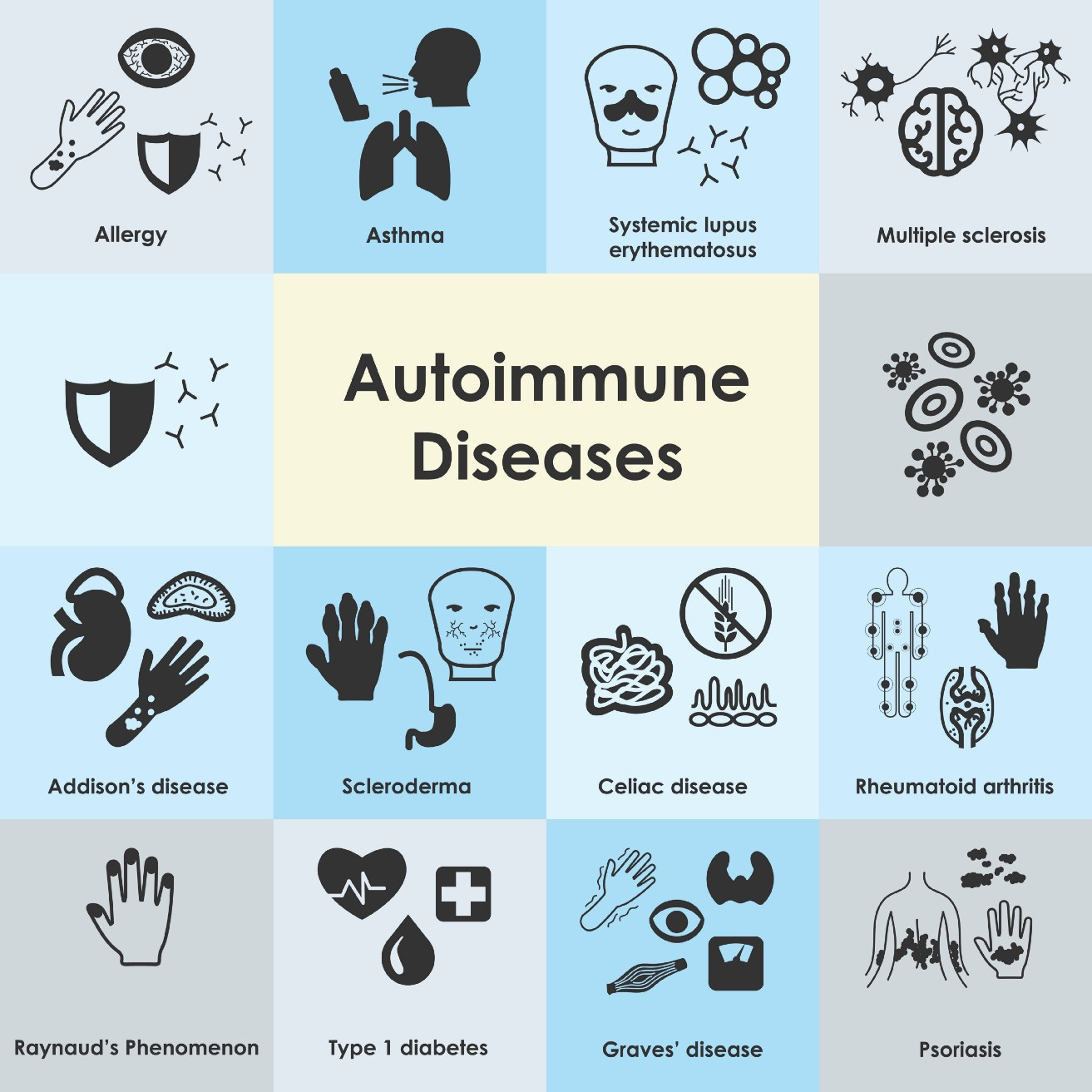Understanding Autoimmune Diseases
Written by Sai Koppada
Autoimmune diseases refer to various conditions, each characterized by a wide range of symptoms. When a person has an autoimmune disorder, the body mistakes its cells as infected or foreign and essentially attacks itself. This mistake leads to inflammation, tissue damage, cell death, and various other complications.
The unique thing about autoimmune conditions is that they aren’t restricted to a certain area of the body. While most conditions affect a specific organ system or a specific region of the body, autoimmune conditions have the potential to affect any part of the body. This can lead to a variety of symptoms that vary based on what organs the body attacks. Some of the most commonly affected body parts are the joints, skin, nervous system, gastrointestinal tract, and endocrine glands. The most common symptoms associated with these autoimmune disorders are dizziness, fatigue, nausea, headaches, dizziness, and pain. Though these are the common symptoms, the specific symptoms that a person experiences can vary based on what area of the body is targeted and how severe the damage is.
Conditions Based on the Area Targeted:
Joints – when the joints are targeted by the body, it can lead to conditions such as arthritis which causes swelling, pain, and deformity in bones
Skin – when the skin is targeted by the immune system, it can lead to conditions such as lupus and psoriasis. These conditions can cause symptoms such as pain, itchiness, discomfort, rashes and scaly skin
Nervous system – when the body starts attacking its nervous system, it can lead to conditions such as multiple sclerosis and Guillain-Barre Syndrome. These conditions can cause symptoms such as lack of muscle coordination, muscle weakness, and a tingling sensation in the body
Gastrointestinal tract – This can lead to conditions such as Crohn's disease, Celiac disease, and ulcerative colitis. These conditions lead to symptoms such as digestive discomfort, cramping, weight loss, fatigue, and bleeding
Endocrine Glands – When the immune system starts attacking its endocrine glands, It can lead to Addison's disease and Graves's disease. Common symptoms include nausea, weight loss, and fatigue.
Causes
The exact cause for autoimmune disorders hasn't been identified yet, but a variety of factors can lead to the development of these conditions. Things such as genetic factors, environmental factors, hormonal imbalances, and lifestyle factors can all contribute to the development of these diseases. Generally, those who have a familial history of an autoimmune condition are at a higher risk of developing the condition because they have a higher chance of inheriting the specific gene sequence that leads to the condition. Hormonal imbalances and certain levels of a specific hormone can lead to the development of these conditions as well. Additionally, when an individual is exposed to certain substances in the environment, it can lead to the onset of these conditions too. Another large contributor to these conditions is lifestyle, the diet and exercise patterns that an individual maintains, can cause autoimmune conditions to worsen.
One similarity across most autoimmune conditions is that these illnesses are a result of the body perceiving its own cells and tissues and foreign objects and attacking them.
Treatments
Though most autoimmune conditions don’t have a “cure”, there are vast amounts of treatments available to manage and reduce some of the pain and symptoms associated with the conditions. Some common treatments include anti-inflammatories that help reduce inflammation, biologics that help boost specific parts of the immune system, and immunosuppressants that suppress the immune system, stopping the body from attacking itself. Additionally, lifestyle changes and surgery are other treatment options that are used to relieve some of the pain and discomfort associated with these conditions.
References
Cleveland Clinic. “Autoimmune Diseases: Causes, Symptoms, What Is It & Treatment.” Cleveland Clinic, 21 July 2021, my.clevelandclinic.org/health/diseases/21624-autoimmune-diseases.
Written by Sai Koppada from MEDILOQUY


